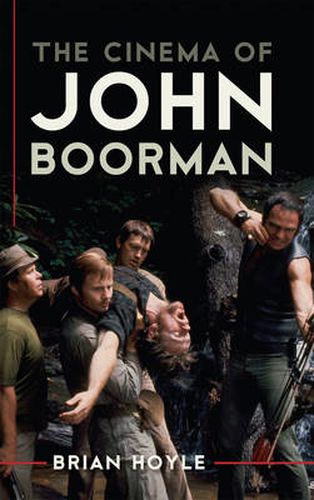Readings Newsletter
Become a Readings Member to make your shopping experience even easier.
Sign in or sign up for free!
You’re not far away from qualifying for FREE standard shipping within Australia
You’ve qualified for FREE standard shipping within Australia
The cart is loading…






John Boorman has written and directed more than 25 television and feature films, including such classics as Deliverance, Point Blank, Hope and Glory, and Excalibur. He has been nominated for five Academy Awards, including twice for best Director (Deliverance and Hope and Glory). In the first full-length critical study of the director in more than two decades, author Brian Hoyle presents a comprehensive examination of Boorman’s career to date.
The Cinema of John Boorman offers a film-by-film appraisal of the director’s career, including his feature films and little-known works for television. Drawing on unpublished archive material, Hoyle provides a close reading of each of Boorman’s films. Organized chronologically, each chapter examines two or three films and links them thematically. This study also describes Boorman’s interest in myths and quest narratives, as well as his relationship with writers and literature. Making the case that Boorman is both an auteur and a visionary, The Cinema of John Boorman will be of interest not only to fans of the director’s work but to film scholars in general.
$9.00 standard shipping within Australia
FREE standard shipping within Australia for orders over $100.00
Express & International shipping calculated at checkout
John Boorman has written and directed more than 25 television and feature films, including such classics as Deliverance, Point Blank, Hope and Glory, and Excalibur. He has been nominated for five Academy Awards, including twice for best Director (Deliverance and Hope and Glory). In the first full-length critical study of the director in more than two decades, author Brian Hoyle presents a comprehensive examination of Boorman’s career to date.
The Cinema of John Boorman offers a film-by-film appraisal of the director’s career, including his feature films and little-known works for television. Drawing on unpublished archive material, Hoyle provides a close reading of each of Boorman’s films. Organized chronologically, each chapter examines two or three films and links them thematically. This study also describes Boorman’s interest in myths and quest narratives, as well as his relationship with writers and literature. Making the case that Boorman is both an auteur and a visionary, The Cinema of John Boorman will be of interest not only to fans of the director’s work but to film scholars in general.